Table of contents
Does a stye have a spiritual meaning after all?
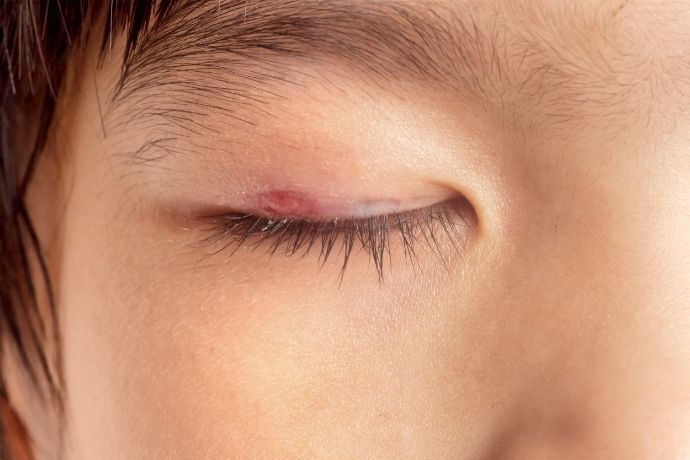
It is well known that many diseases and disorders that affect the body have an emotional, that is, psychosomatic, origin. When the body somatizes, it is responding in a physical way to unaddressed inner issues. However, there are also spiritual causes for some pain and illness.
The stye is a bacterial infection, a nodule-like lesion that presents redness and pain at the edge of the eyelid. It is caused by the obstruction of small glands at the site. Obstruction is, here, the key word to understand the spiritual meaning of the stye.
They say that the eyes are the windows of the soul. The spiritual meaning of eye diseases is about the way we receive experiences. Manifestations like the stye are signs that we need to awaken to a new way of looking at things. Read on to understand it all!
What are the causes of a stye?
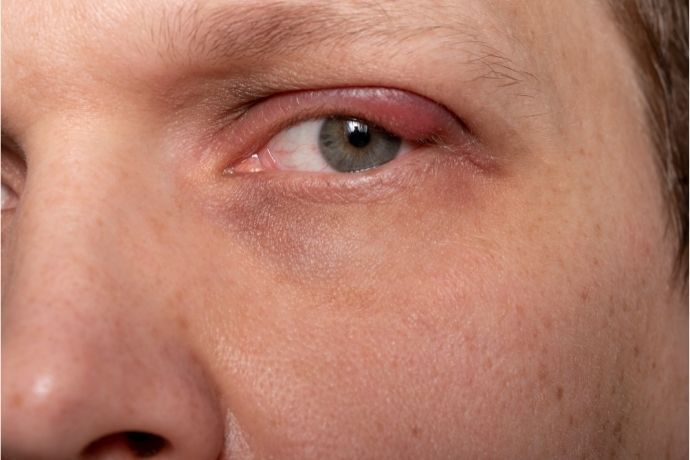
We will learn about the causes of sties, addressing physical, spiritual, and emotional issues that can trigger this type of infection.
Physical causes of a stye
The stye is the result of a bacterial infection in the small oil glands or hair follicles located on the eyelids. When these glands and follicles become clogged, that is, clogged with dead skin cells and other tiny debris, a nodular lesion develops.
The infection is, therefore, a consequence of the accumulation of bacteria trapped inside these glands. However, besides bacterial infection, there are other factors that stimulate the stye, such as low immunity, blepharitis, excess oil on the skin, inadequate makeup removal, and other problems in the glands.
In addition, we will see what role emotional and spiritual issues play in the development of the stye.
Low Immunity
The weakening of the immune system is caused by several factors, for example some chronic diseases and the use of medications. When the body has its defense against microorganisms reduced, the risk of developing a stye increases significantly.
So when a stye appears, immunity is probably lower, but this may not be due to disease, but is also a consequence of bad habits, sleep deprivation, and vitamin deficiency.
Bacterial Infection
A stye caused by bacterial infection occurs with the proliferation of bacteria in eye glands, especially those at the edge of the eyelid. These glands become clogged for a number of reasons, such as excessive microorganisms like dirt and even dead cells accumulating.
The bacterial infection that creates the stye is caused by a bacterium of the type called staphylococcus aureus, which inhabits the skin and is generally harmless, but its accumulation in glands or follicles can trigger an infectious process.
Blepharitis
Blepharitis is a chronic, non-contagious but not curable inflammation that usually affects both eyes along the edges of the eyelids. Its onset is due to clogging of the sebaceous glands located at the base of the eyelashes, causing irritation, scaling, redness, and a feeling of having a foreign body in the eye.
The stye can be a consequence of blepharitis, and is quite common in people who are affected by this eye disease.
Gland problems
There are small glands that line the upper and lower eyelids. They are located just behind the lash line. These glands are responsible for lubricating the surface of the eye, allowing clear vision.
Like any glands that are part of the skin, they can become blocked, creating a receptive environment for bacteria. This is a common cause for eyelid sties, and occurs because when the glands are blocked, the eyes become sensitive and exposed to particles and bacteria.
Oily skin
People with oily skin are more prone to develop sties, due to the excess secretion that the glands of the skin produce. This is why sties are quite common in teenagers, due to hormonal dysregulation, as well as in other people who go through hormonal changes.
When the base of the eyelashes receive accumulation of oil, it can block the normal outflow of secretion and create a favorable environment for the proliferation of bacteria, generating inflammation.
Improper Makeup Removal
Makeup, like eyelash extensions, attracts a lot of dirt and bacteria, and its accumulation can clog the glands. When makeup is not removed properly, i.e. by taking care to remove all residues and keep the skin clean, the sebaceous glands of the eyelid become prone to infection.
It is important that those who use makeup choose less oily products to remove it, because certain products remove residues but add oiliness to the skin. And remember to never share makeup utensils such as brushes.
Emotional causes of stye
All the organs of the body correspond to energetic channels through which emotions flow. The eyes, in this sense, are a gateway, or a window to experiences. What we see and what happens to us passes through the senses, and besides being the organs of sight, the eyes are important when we talk about assimilation of our feelings.
When a person goes through a moment of crisis, when they are having difficulty finding ways out or seeing what is best for them, their eyes can manifest signs that, beyond the physical, there may be emotional causes for certain ailments.
Spiritual causes of sties
The spiritual causes of the stye are linked to difficulties in opening the inner eye, which means that the person is, even if unconsciously, refusing to see certain inner truths.
Our spirit is who we are in a deeper way, but we often distance ourselves from our real identity to conform to the demands and pressures of the physical world. This is how some illnesses or pains claim attention, through the physical body.
Learning to look at the world and life from a more spiritual point of view is a long process, like all learning that transforms.
Sties in the right eye
The right eye is governed by the left side of the brain. This is the side that drives the male flow, and is associated with logic, intellect, action, rationality, objectivity, and the physical.
When your right eye is affected by a problem such as a stye, you are getting signals to pay more attention to how you handle practical aspects of your life. There is something at odds between your spirit and the way you have been living, and this issue demands attention and care.
Sties in the left eye
A stye can occur in both eyes. When a stye appears in the left eye, you have to think about which part of the brain governs this side of the body. But remember that your body is governed by the opposite side of your brain.
Thus, the left eye is governed by the right side of the brain, which is the domain of the feminine, imagination, creativity, intuition, and spirituality. A stye in this eye indicates a need for reconnection with oneself and spiritual learning.
Sties in both eyes
The eyes make possible the connection between souls and also express feelings. Everything passes through the eyes, and if they share messages with other people, they can also tell us important things about ourselves.
When a stye or other eye problems arise in both eyes, they are linked to balance issues to be resolved. You need to find a meeting point between your spiritual aspirations and physical actions.
Understanding more about the stye
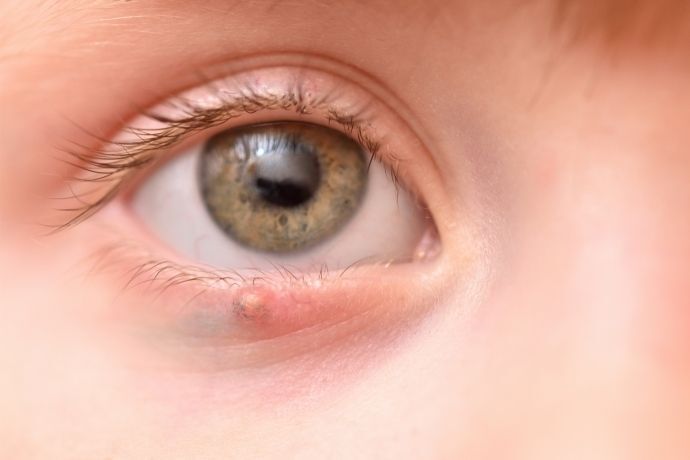
Below, we will find valuable information to understand more about the styrax. We will learn what it is, what the symptoms are, how to treat and prevent it, and other important guidelines. Check it out.
What is a stye?
A stye is an infection in the eye area that creates a red, tender lump near the edge of the eyelid. Its cause can be a build-up of bacteria at the base of an eyelash or a blockage of one of the small sebaceous glands in the eyelid.
This blockage of secretions occurs when the glands or hair follicles receive excess foreign matter such as dead skin, dirt, and makeup.
The accumulation of substances that block these secretion ducts makes the environment favorable for bacterial proliferation, causing infection. However, the reasons for the appearance of a stye also include other eye diseases, injuries such as scratches, and in rare cases cancer.
Symptoms of sties
The symptoms of a sties can cause a lot of discomfort and are similar to other problems that affect the eyelid area, such as chalazion and conjunctivitis.
The most obvious sign that you have a stye is the appearance of a small reddish blister or nodule, located on the outer edge of the eyelid.
In addition to this characteristic lump, a stye causes swelling and pain in the eyelid area, and a warm or burning sensation at the site. The ongoing inflammation usually comes with itching, excessive tearing, and sensitivity to light.
How long does a stye last?
Most cases of sties last for about 3 to 7 days, but it is a problem that can persist for a week or two, depending on a number of factors, including genetic factors, the person's immune status, the origin of the stye (whether it is caused by other diseases of the eye, for example), and the evolution of the infection.
In the vast majority of cases, the stye is a problem that goes away on its own, that is, it goes through an infectious process that gradually softens, healing without any intervention, besides basic hygiene care and application of compresses.
How to improve the stye
The healing process of the stye tends to be accelerated by applying warm compresses for 10 to 15 minutes, on average three or four times a day, for as long as the symptoms last.
In most cases, what happens naturally is that the boil opens, drains and heals spontaneously, i.e. without further intervention.
Although in the vast majority of cases the stye disappears more quickly with the help of basic home procedures, such as compresses, there are cases that require surgical drainage.
External terçol
A stye can be external or internal. When you develop an external stye, you notice the formation of a lump, like a small reddish painful blister, at the base of the lash, i.e. at the edges of the eyelid.
Most cases of external sties are caused by an infection originating from the accumulation and proliferation of bacteria in the hair follicle. The appearance of this type of stye can resemble a pimple. It is the most superficial type and tends to disappear the fastest.
Internal pinkeye
An internal stye is the result of a bacterial infection of the secretion-producing glands located on the inside of the eyelids. The small lump in these cases forms internally, i.e. in contact with the eyeball.
This type of sties tends to be more severe than the external stye, and often lasts longer, and the person should be treated by an ophthalmologist, who may prescribe medication and compresses. However, it occurs a little less frequently than an external stye.
Is there any ritual or sympathy to cure the stye?
The proper way to cure a stye is to follow the advice of a healthcare professional, more specifically an ophthalmologist, who can evaluate the lesion and guide the patient through daily care and possible treatments.stye.
These procedures, we must remember, are not scientific, nor do they replace clinical care, but they help in the energetic purification that favors healing. In this sense, the practice of meditation is an ally for healing by cleansing the chakras. The use of crystals with healing energies in meditation enhances the positive effects.
When to seek medical help?
Although most cases of sties heal spontaneously, disappearing in about 3 to 7 days, it is important to seek the advice of an ophthalmologist, especially if this is the first time you have had this problem.
The ophthalmologist, in specific cases, can prescribe some medication to make the infectious process less painful and advise on home procedures that help speed up the removal of the infection from the body.
Some signs are crucial for you to know when to see a doctor without delay: if the stye doesn't improve after a week; if there is growth of the nodule; if your vision is affected.
Precautions and possible complications
Among the precautions that people with a stye should take, it is important to take extra care with hygiene, so as not to aggravate the infection. Wash your hands before and after touching the stye, do not share towels with others, and prefer to wear glasses rather than contact lenses until it disappears.
A frequent complication is progression to a chalazion, which can cause cosmetic deformity and corneal irritation, and may lead to the need for surgical removal. Other complications arise from inadequate puncture, preventing eyelash growth, causing eyelid deformity or fistula. A rare complication is orbital cellulitis, which can impair vision.
How to prevent sties
A staphylococcal bacterium is often the cause of a stye, which proliferates in the nose and is easily transferred to the eye when a person rubs his or her nose and then touches the eyelid.
People who wear contact lenses should keep them very clean. Poorly removed make-up also favors infection. Those with certain health conditions such as blepharitis, dandruff, rosacea, diabetes, or high levels of bad cholesterol, should take extra care because of the greater propensity to develop a stye.
Be aware of the myths about the stylet
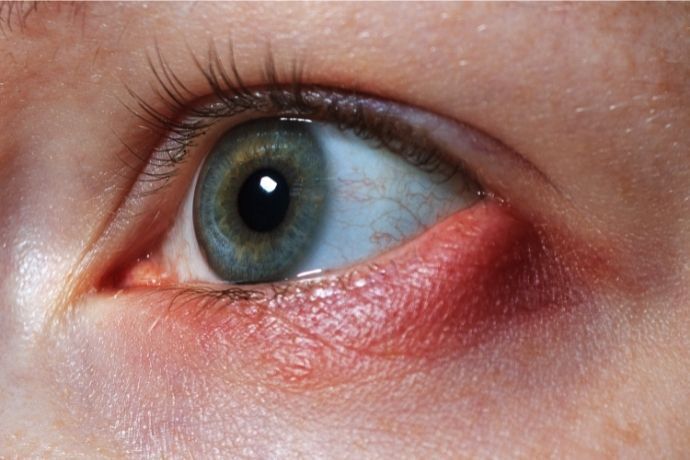
The stye is an uncomfortable problem that is surrounded by myths. It is common to hear that the stye is contagious, or to hear about homemade recipes to cure it.
The stye is contagious
In principle, a stye is not contagious, but when a person with a stye touches the lid lesion and then touches, for example, another person's hand or finger, the bacteria can be transferred.
It is important to emphasize that this transmission is rare, and basic hygienic care ensures that it does not happen.
Avoiding the appearance of a stye involves keeping the hands clean and not touching the face without sanitizing them after contact with surfaces such as doorknobs. Makeup should not be shared, nor should personal items such as face towels.
The terçol improves by putting on a hot ring
Many people have heard from parents or grandparents that a stye improves when a warm ring is placed on or near the eyelid. This procedure, according to ophthalmologists, should be discouraged.
The belief that a heated ring or coin helps to cure the stye comes from one fact, however: swelling and pain improve with heat, which is exactly why it is recommended to put warm compresses on the area.
Prefer this method, recommended by ophthalmologists, because a hot metal object in contact with the skin can attack the lesion, causing burns.
The sun is bad for sties
Many people believe that the sun is bad for the stye and that people with the problem should avoid sun exposure, at the risk of aggravating the symptoms. However, this is not true.
The sun is not particularly bad for people with a stye, and the risks of sun exposure are the same for everyone. In fact, people with a stye have eyes that are more sensitive to light, and in this sense, sunbathing may simply increase discomfort in the area.
Those who have a stye can be outdoors, but wearing sunglasses with UV protection to ensure eye safety.
Squeezing helps get rid of the stye
The appearance of the stye makes it resemble a pimple, which makes it tempting to squeeze them out, but this is not recommended by ophthalmologists. The stye goes through an infectious process in which the drainage occurs spontaneously, healing the problem in its own time (between 3 days to more than a week).
What can be done safely is to put warm compresses on the area, always using a clean cloth, for about 15 minutes, between 3 and 4 times a day.
Therefore, never pop, pinch, or try to drain a stye yourself, as the infection can spread, making the condition worse. Also try to avoid wearing contact lenses or make-up when you have a stye.
Can a stye mean negative energies?
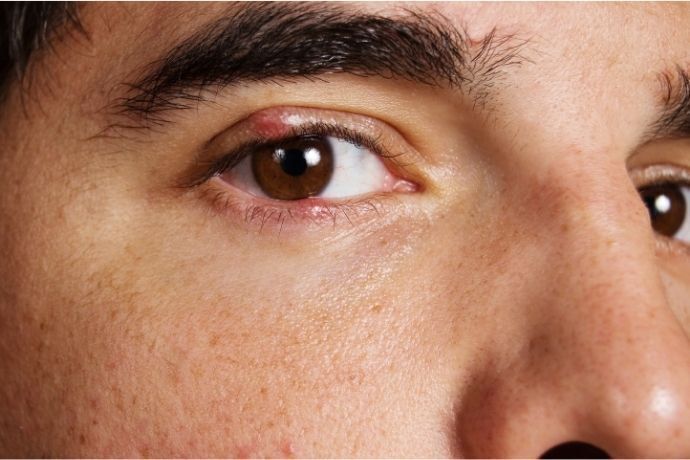
The stye is an infection on the eyelids that, despite having physical causes, such as, for example, the obstruction of secretion glands and the proliferation of bacteria, signals that the body may be wanting to give warnings about an emotional or spiritual fragility.
Diseases are often external manifestations of internal issues. The stye does not mean, spiritually, the presence of negative energies in a strict sense. What can happen is that a person with unprotected emotions or who neglects spiritual issues he or she is experiencing may have, temporarily, the densest and most charged energies.
Thus, it is necessary to align the health of the body with the psychological and spiritual well-being, in order to avoid the appearance of physical and emotional illnesses.

